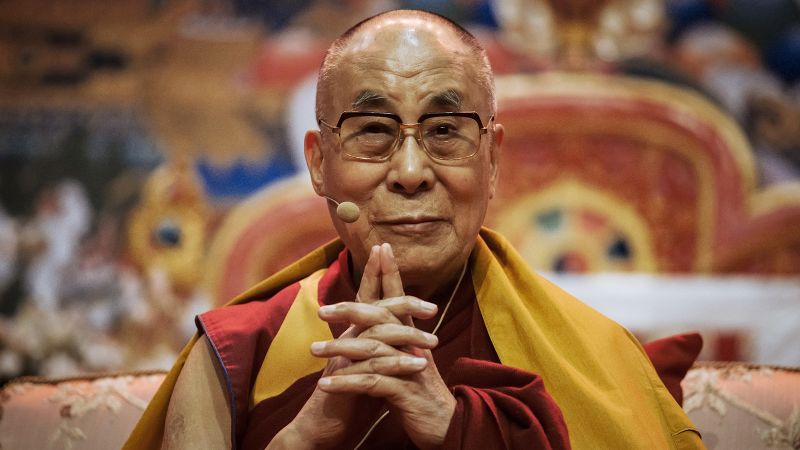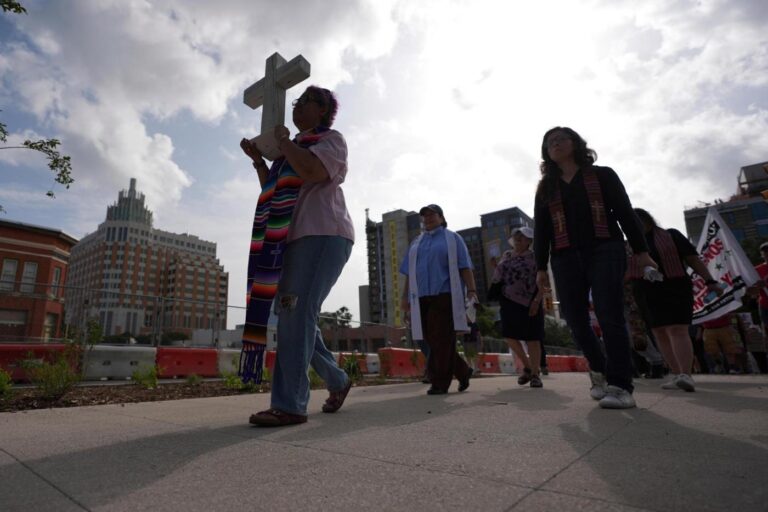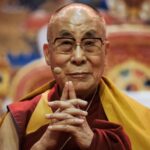As the Dalai Lama approaches his 90th birthday this Sunday, the revered spiritual leader finds himself at the center of a significant confrontation with Beijing over the future of his reincarnation. The Dalai Lama has been a pivotal figure in Tibet’s struggle for autonomy under Chinese rule, and his announcement on Wednesday that his office will have the sole authority to identify his reincarnation marks a critical moment in this ongoing conflict.
In a video message to religious elders in Dharamshala, India, where he has lived in exile since 1959, the Dalai Lama stated, “I am affirming that the institution of the Dalai Lama will continue.” This declaration sets the stage for a potential showdown with the Chinese Communist Party, which claims the right to approve the next Dalai Lama.
The Spiritual and Political Significance of Reincarnation
The cycle of rebirth is central to Tibetan Buddhism. Unlike ordinary beings who are reborn involuntarily, the Dalai Lama is believed to choose his rebirth for the benefit of all sentient beings. However, the reincarnation of the Dalai Lama has transcended spiritual boundaries, becoming a geopolitical issue with implications for the entire Himalayan region.
Thupten Jinpa, the Dalai Lama’s longtime translator, highlights the leader’s unifying role, stating, “He has been such a magnet, uniting all of us.” The Dalai Lama’s latest memoir, “Voice for the Voiceless,” emphasizes that his successor will be born in the “free world,” urging Tibetans to reject any candidate selected by Beijing.
China’s Claim and the Historical Context
China’s ruling Communist Party insists it holds the authority to approve the next Dalai Lama, as part of its broader strategy to control Tibetan Buddhism and the region. This ambition reflects the state’s desire to dominate a centuries-old spiritual tradition. Beijing brands the current Dalai Lama as a separatist, blaming him for unrest in Tibet.
Historically, the Dalai Lama has been a symbol of Tibetan identity and resistance. After fleeing to India in 1959 following a failed uprising, he established a government-in-exile in Dharamshala. Ruth Gamble, a Tibetan history expert, notes that the Dalai Lama has become an “abstract ideal of a whole nation.”
The Role of the Panchen Lama
Beijing has attempted to undermine the Dalai Lama’s influence by installing its own Panchen Lama, a move that defies Tibetan tradition. The Panchen Lama historically plays a role in identifying the Dalai Lama’s reincarnation. However, Beijing’s Panchen Lama is seen as an imposter by many Tibetans.
“It’s totally inappropriate for Chinese Communists, who explicitly reject religion, to meddle in the system of reincarnation of lamas,” the Dalai Lama writes.
The Search for the Next Dalai Lama
The search for a Dalai Lama’s reincarnation is a sacred process involving spiritual clues and tests. The current Dalai Lama was identified as a child in Tibet, but his successor may be found outside China, complicating Beijing’s plans.
Lobsang Sangay, former prime minister of the Tibetan government-in-exile, suggests that Beijing might pressure countries to recognize its chosen Dalai Lama. This geopolitical maneuvering could force nations with Buddhist populations to take sides.
Preparing for the Future
Aware of his mortality, the Dalai Lama has worked to strengthen the Tibetan movement, transitioning political power to a democratically elected leader in 2011. This move aims to ensure the Tibetan people can sustain their struggle for autonomy independently.
Under Xi Jinping, China has intensified efforts to assimilate ethnic minorities and align religion with Communist Party values. Despite these challenges, some Tibetans remain hopeful that the Dalai Lama’s legacy will endure.
“If we can get our act together and the Dalai Lama institution continues, the power of the symbol will be maintained,” Jinpa asserts.
The Dalai Lama’s impending succession represents not only a spiritual transition but also a significant political moment, with potential consequences for Tibet’s future and its relationship with China. As the world watches, the outcome of this battle could shape the region’s geopolitical landscape for years to come.
























